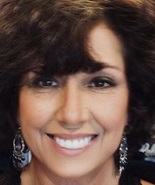
It seems to be common sense for most people that forgiving others is for our own healing and has nothing to do with the person we are forgiving.
Although this may be true, what is not part of this understanding is that we are only forgiving on a superficial level because we are using our logical minds, not our hearts, when we forgive.
The reason we need to forgive someone in the first place is that they were able to cause us some level of emotional grief. If we are having a difficult time forgiving someone, chances are that our emotional experience was a trigger response from an unhealed part within ourselves that became reactivated. This unhealed part is emotionally held in the brain, which then triggers activation in the nervous system.
Most of these unhealed wounds are from childhood when we did not have the resources to resolve them. This caused us to push our emotions down so we could continue to function in life without being disturbed by our emotional wounding.
The logical mind comes from our conscious awareness. The original wound is still hidden within the unconscious mind of the adult, meaning outside of conscious awareness. The original wound is stored in the mind at the level of a child’s perception. As children, if we were not able to get our emotional needs met, it became a threat to our safety. This means the emotional trigger caused a survival response, which comes from the memories stored in the unconscious mind. The brain is telling the nervous system that there is an attack. That is why we feel so insulted when we are triggered.
We unconsciously feel that we are not being accepted for who we are, which is a threat to our safety in the world. It is that old familiar feeling of unworthiness we felt as a child. As an adult, we may get defensive as old anger surfaces (fight response), or we may run away from the situation or hide to protect ourselves (flight response), or we may shut down because we cannot fight back or run (freeze response). These are all survival responses.
The logical mind of forgiveness is, therefore, just a Band-Aid approach to self-healing. There is still a childhood memory that contains suppressed emotions like sadness, anger, shame, guilt, and resentment, along with the survival response recorded in the nervous system. This unconscious part of the mind did not forgive the original wounding. Forgiving someone who triggered the suppressed emotional wound will not heal the original wound. Unfortunately, the original wound can get triggered many times over again until it is fully healed.
To heal the pain that we suppressed during childhood, we need to communicate with the child’s mind within our consciousness. The child’s mind is still trapped in a time warp and is waiting to reach a place of safety through confirmation that they are worthy of the world. The adult logical mind follows the philosophy of forgiveness heals, but through the channels of adult intelligence. Part of the adult mind has done some forgiving, but there is still the child mind within the adult that doesn’t understand forgiveness but only safety and a need for acceptance.
For forgiveness to be authentic, there first must be compassion. Children have compassion because it is human nature. We only lose that sense of compassion as we grow older because of so many hurts and disappointments. For true forgiveness to take place, we must forgive from the heart, not the head. We also must work on our past hurts that we have never dealt with.
Once we work through any lingering childhood pain, we will not get so easily triggered by others. We will not hold onto someone’s inability to be kind as if it was a dagger in our hearts. We will understand from a compassionate level that they are unconsciously releasing their unhealed pain into the environment around them. We will know it is not about us but their own insecurities that are showing up in our presence.
Authentic forgiveness needs to be between your childhood self and those who you feel caused you some pain. As an adult, you already know from your “logical mind” that the people in your childhood life, usually parents, did the best they could. The child’s mind, another part of you, does not feel the same way. The child’s mind is still trying to figure out what is wrong with them. It is that deep feeling of unworthiness that was triggered in the adult and the superficial forgiveness was directed toward the person who unknowingly triggered a childhood wound.
Authentic forgiveness comes from the compassion a child feels when they realize that the people in their lives were doing the best they could and that their reactive behavior was not due to the child’s presence in their life but due to some unhealed pain within the adult. If the forgiveness of the original wounding does not take place, then the original wounding does not get healed. Again, this cannot be done from the logical mind because the child’s mind does not contain logic and intellect, only thoughts and feelings that have been distorted due to the fear of unworthiness.
How do we go back to our suppressed childhood memories and help the inner child forgive those who made them feel bad? We do it through their innate feelings of compassion. We help our inner child understand that adults carry pain from their unhealed childhood.
To do deep forgiveness work, we need to get out of our analytical mind and into the deeper parts of the mind where these unhealed memories are stored. To do this, here are some steps you can take:
1. Go into meditation or self-hypnosis to get to a level of your higher mind. This is where compassion comes from.
2. Ask for your childhood self who needs healing to step forward.
3. When you can see, feel, or somehow sense that a younger version of you has come forward, ask that version of you what they need.
4. Ask who they need this from.
5. Ask if you could give this to them now. Most likely it will be yes.
6. Explain to the child version of you, using your higher mind, that the person or people who made them feel bad were also feeling bad. Explain to the child how others hold onto their pain because they do not know how to heal it. In your own words, let the child know that they are safe, and they are loved.
7. Ask the child version of you if they could find it in their compassionate heart to forgive these others now that they know that their behavior was because of their pain, and they never wanted to hurt this innocent version of you.
8. Ask the child to forgive themselves for believing that they were unworthy of love. Remind them how valuable, lovable, and significant they are in the world.
9. Once authentic forgiveness has taken place, ask this version of you to integrate themselves with the rest of you so they can grow up with your other grown-up parts and live the life they choose.
Once integration takes place, the healing will be complete. This process can take one time or several times to release the feelings of woundedness and unworthiness that have been buried within the childhood self for a long time.
If you would like to do this process with a guided meditation, please go to my YouTube channel and click on “Ascension Mediation.” This meditation will guide you into your higher mind and then guide you to locate the parts of you that need healing. You will need to engage in your own inner dialogue to complete the healing process.
All the best to all parts of you in your healing process.
Please consider Boosting our authors’ articles in their first week to help them win Elephant’s Ecosystem so they can get paid and write more.


Read 4 comments and reply